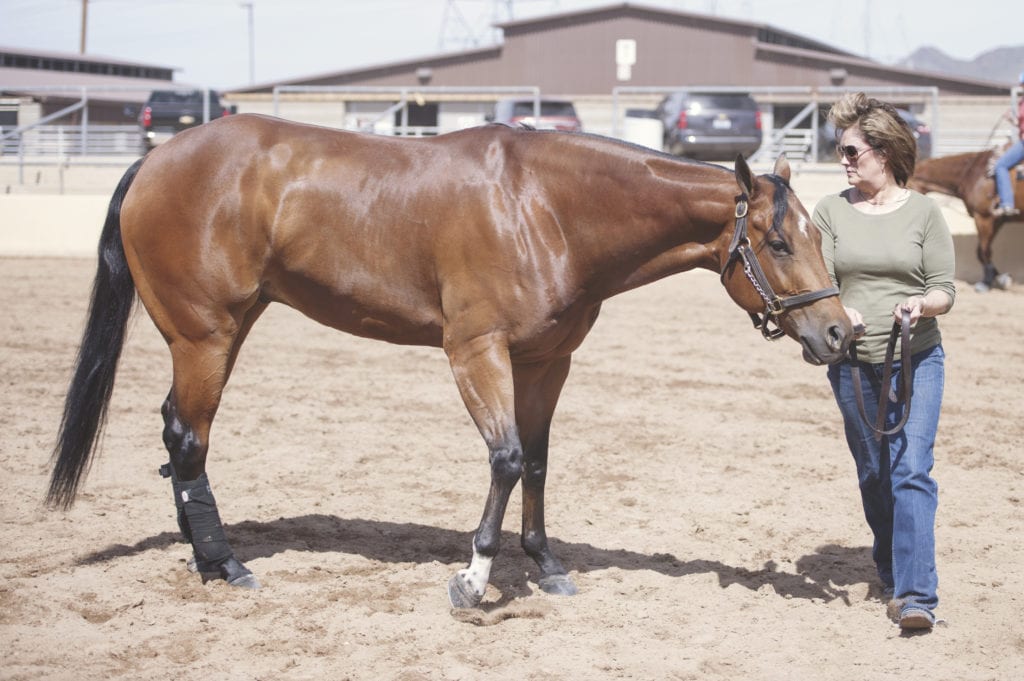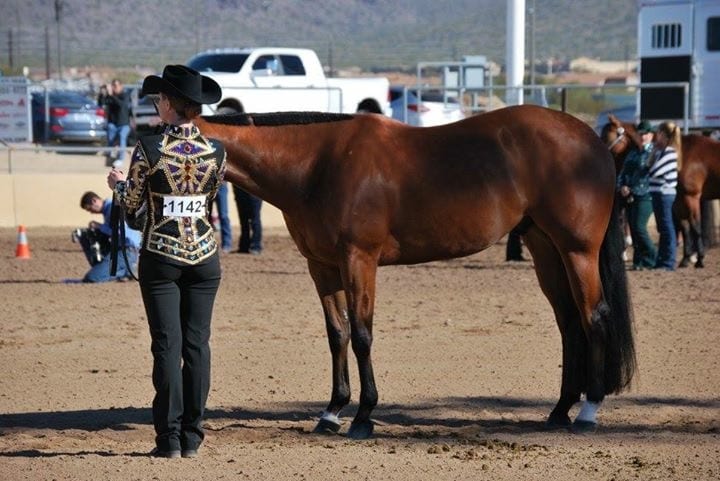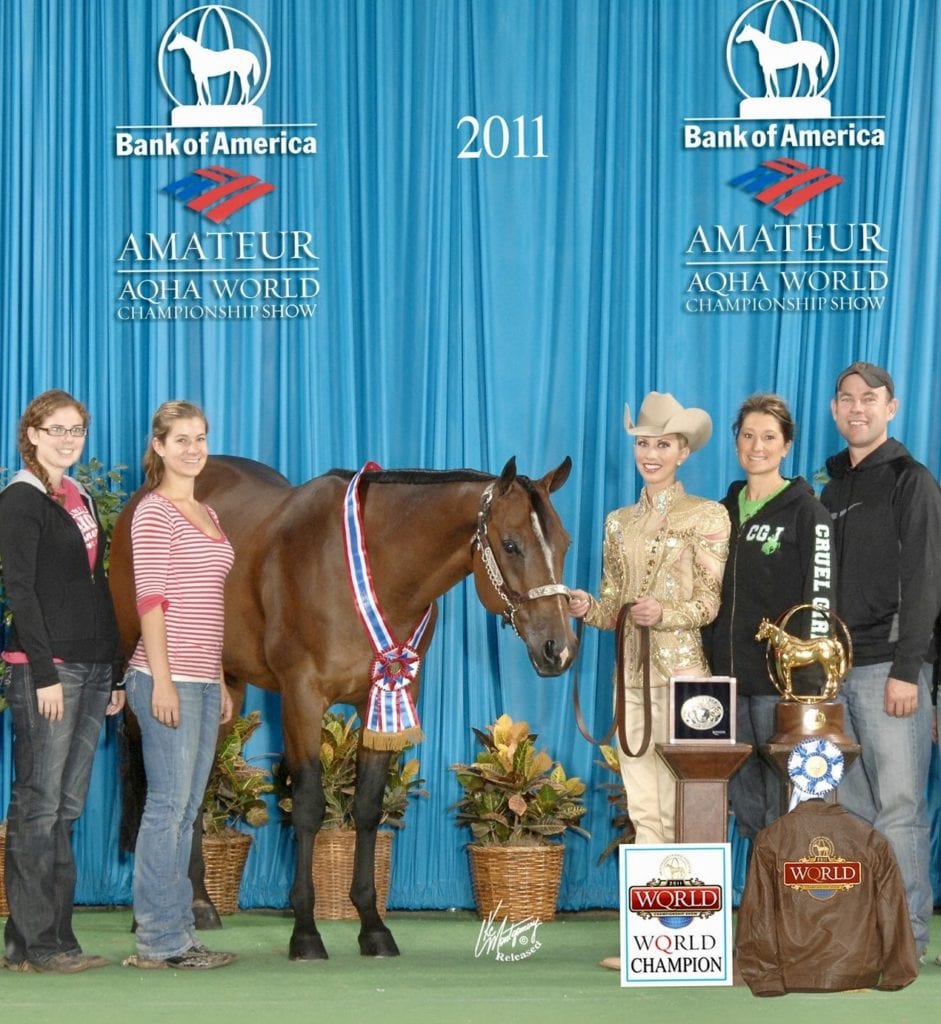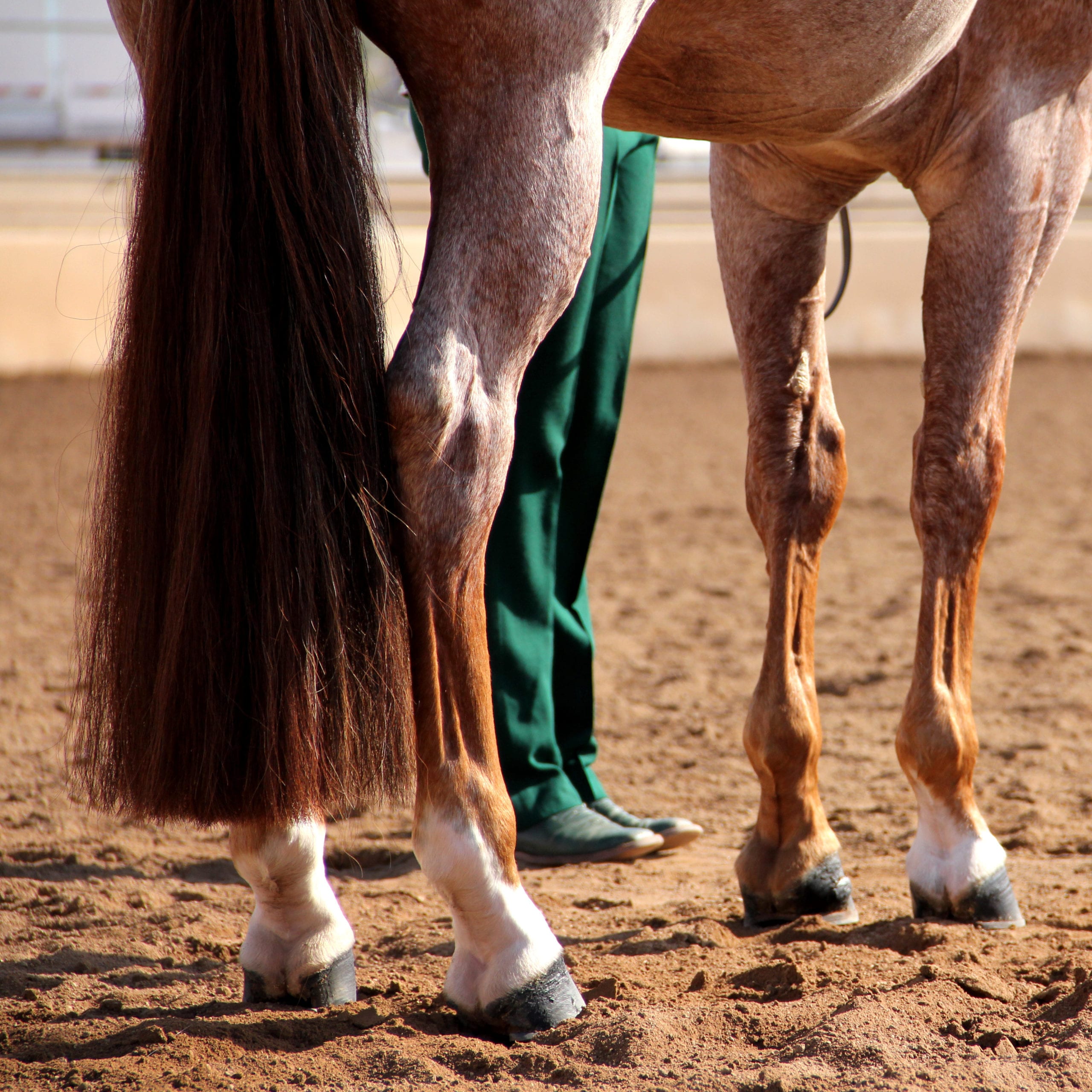So, you have a horse that is naturally talented at showmanship maneuvers. They pivot well, they set up fast, they back straight and off your body; but occasionally, they… well, misbehave.
Maybe they nip at you every once in awhile. Or for some reason start to develop nervousness at the start cone. Maybe they are even getting dull.
Whatever the case may be, most horses are not robots and from time to time, they will start to cheat or misbehave.
GoHorseShow sat down with two top AQHA trainers and Professional Horsemen, Tommy Sheets and Barbie Evans and asked them their strategies on how to correct six common bad behaviors in showmanship horses both at home and in the show pen. If your horse is guilty of any of these, read on for some amazing tips.
1. The Shark
Perhaps the most common bad behavior in showmanship horses is a horse that decides they want to eat you for lunch (or breakfast or dinner or even just for a snack).
Horses that nip and/or bite are definitely not the easiest, most fun, and they certainly aren’t winners in the showmanship. This is a behavior that needs to be addressed immediately.
 Sheets (pictured right) recommended a couple of ways to school at home to try to eliminate this bad behavior.
Sheets (pictured right) recommended a couple of ways to school at home to try to eliminate this bad behavior.
“One way that is effective is to get a small rope colt cavesson that sits low on the nose and closes the mouth,” he said. “School with this under the halter, still using a chain, every time at home. The horse gets used to not opening their mouth when the chain is on.”
Another option for Sheets is to school with the chain over the nose at home.
“A chain over the nose can be more effective than under the chin when trying to get the horse off of you,” he said.
Evans offered some additional options for schooling shark-like horses at home.
“Putting hot sauce, chew stop, or something else that tastes nasty on your hand, the chain, or anywhere they might grab is one way to get them to stop trying to nip or bite at you,” she said.
Evans also recommended to never feed a showmanship horse treats by hand as it just encourages this kind of bad behavior, especially in horses that are naturally inclined to nibble.
“Sometimes these horses need to be disciplined across the nose in some manner,” she said. “One great way to aid in any showmanship behavior problem is to put on a mock class at home. Have the students get in their show attire, get a microphone you can click on and off, play music, anything you can to mimic a real show. Then, do your schooling. It can be very effective.”
If it gets to the point that the horse needs to be schooled in the show pen, Evans said that shanking a horse off you can be necessary but reminds exhibitors to not be overly aggressive.
2. The Snake
 Your once impeccably straight tracking horse is all of the sudden resembling a snake slithering through the sand. At the walk and/or the trot, he starts to bow his body either out or in (or maybe even both).
Your once impeccably straight tracking horse is all of the sudden resembling a snake slithering through the sand. At the walk and/or the trot, he starts to bow his body either out or in (or maybe even both).
Given that straight lines are a large part of showmanship, this really is an issue.
“If you have a horse that bows away from you, holding a whip on the off side and tapping them on the side till they turn tight to you is one way to correct this behavior,” said Sheets (pictured left). “For a horse that bows in toward you, I go back to the chain over the nose. A chain over the nose will actually aid in correcting many bad showmanship behaviors. In this case, it will help in getting the horse out of your space.”
Evans suggested, “I like to set up trail poles just wide enough for the horse and handler to fit in and walk and jog them through it until they get the idea of where they need to be. It’s a good way to set up boundaries and put them in a position where they can’t get away.”
One thing both Sheets and Evans advise against is using the rail to aid in your correction of this issue. It can become too much of a crutch and inevitably when you take the horse back to the center, the problem will arise again.
3. The Shifter
 Being a showmanship horse is hard work. In fact, according to most horses, just being a horse is hard work and so sometimes, they need to um… rest?
Being a showmanship horse is hard work. In fact, according to most horses, just being a horse is hard work and so sometimes, they need to um… rest?
So, you’ve made your way to the judge, set up your trusty steed and he decides to either move a foot (he didn’t like it there) or rest a hind leg (hey, he’s tired). Of course, this is a penalty and both are behaviors that need to be addressed.
At home, Sheets recommends a lot of repetition with the word “whoa” and taking command of the chin.
“When we practice at home, we say “whoa” and get their chin on both sides,” he said. “On every single cross over when you are schooling at home you need to be saying “whoa” and making sure you have control of their chin.”
Sheets said, to him, the number one issue with horses who are naughty in showmanship is that they are resistant to the chain.
“Jerking horses all the time creates anxiety to the chain,” he said. “Our goal is to get them comfortable with the chain and that happens a lot with the set up. Getting them to stand comfortably with the chain should be a top priority.”
Evans recommends taking advantage of the halter classes if you have a showmanship horse that needs to be corrected of these behaviors at the shows.
“In halter, it is okay to touch a horse’s feet and scold them a little bit if they aren’t acting properly,” she said. “For horses who move or rest during the setup, this is a great way to get them to break that habit in the show pen.”
4. The Nervous Nellie
 We’ve all either seen it happen or been there ourselves, an exhibitor is waiting patiently at the start cone but the horse is not.
We’ve all either seen it happen or been there ourselves, an exhibitor is waiting patiently at the start cone but the horse is not.
It is not uncommon for horses to get anxiety while awaiting their go, but it sets a bad precedence for the pattern, hypes up nerves, and is simply not a desirable behavior.
For these nervous Nellies, Sheets has a system he uses to make the cone “the happy place.”
“We like to teach our horses to exhale,” he said. “We will start by trotting multiple circles and stop at the cone. When the horse exhales, we rub their neck at the withers and condition them to realize that the cone is a comfort spot. Once they understand this concept, we add setting up immediately after stopping at the cone, wait for them to exhale, and rub them.”
Evans’ method is similar in nature. “I like to set up a lot of cones all around the arena and have the horse trot to each cone and stop and rest,” she said. “For a horse that really gets nervous, you can pull their head down to the ground, almost putting them in a ‘time out.’ The idea is that when you have pressure on the chain that means to stand still.”
5. The Sensitive Horse
 Sometimes, horses don’t have just one or two behaviors that are undesirable, but they may have a unique personality that makes training overly difficult in general. Sensitive horses, the ones that take everything just a bit too seriously, can be a challenge for some to train.
Sometimes, horses don’t have just one or two behaviors that are undesirable, but they may have a unique personality that makes training overly difficult in general. Sensitive horses, the ones that take everything just a bit too seriously, can be a challenge for some to train.
Sheets said, “You have to have patience with these kinds of horses and just do it every day. Doesn’t have to be a long time, fifteen minutes is fine. But in my experience, these horses learn quite quickly and can make really good showmanship horses. Ultimately though, they have to be desensitized to that chain.”
Evans (pictured right) also says desensitization is the key to making a sensitive horse a good showmanship horse.
“Sometimes you can just start by schooling without the chain,” she said. “Also, these horses thrive on being petted a lot. And they may be the type that needs lunging before the showmanship at a show. At home though, any time they overreact about something, I make them do it again until they just get tired of doing it over and over.”
Evans gave an example of a horse that moves an extra step away after a pivot. She said she will bring the horse the step back and make them wait for a time before asking it again. Eventually, the horse gets tired of the waiting and stops taking that extra step.
6. The Dull Horse
 On the opposite end of the spectrum is a horse that resembles Eeyore. That is to say, he is rather dull.
On the opposite end of the spectrum is a horse that resembles Eeyore. That is to say, he is rather dull.
For these kinds of horses that need a little extra encouragement, Sheets and Evans both recommend using some sort of aid to help them a little.
“I like to use some sort of tapper, like a crop, at home to school these horses,” said Sheets.
Evans agreed adding that even the tap of the lead rope can be effective.
Where the tap should fall depends on the maneuver but generally, a tap on the shoulder for a livelier pivot, or a tap on the knee for a back that doesn’t drag will wake them up a little bit.
Another tool? You guessed it. Chain over the nose.
“Dull horses can respond much better to a chain over the nose,” said Evans. “Sometimes, you may have to even take them into the show pen that way.”
One of the biggest things Evans stressed is that sometimes you have to be willing to give up a class to school, otherwise some horses just may never cease the behavior. “It’s imperative that you be willing to school in a class if need be,” she said. “No matter what bad behavior you are trying to correct.”
Photos © Delores Kuhlwein, Tiffany Anne Photo, KC Montgomery, Carey Nowacek








